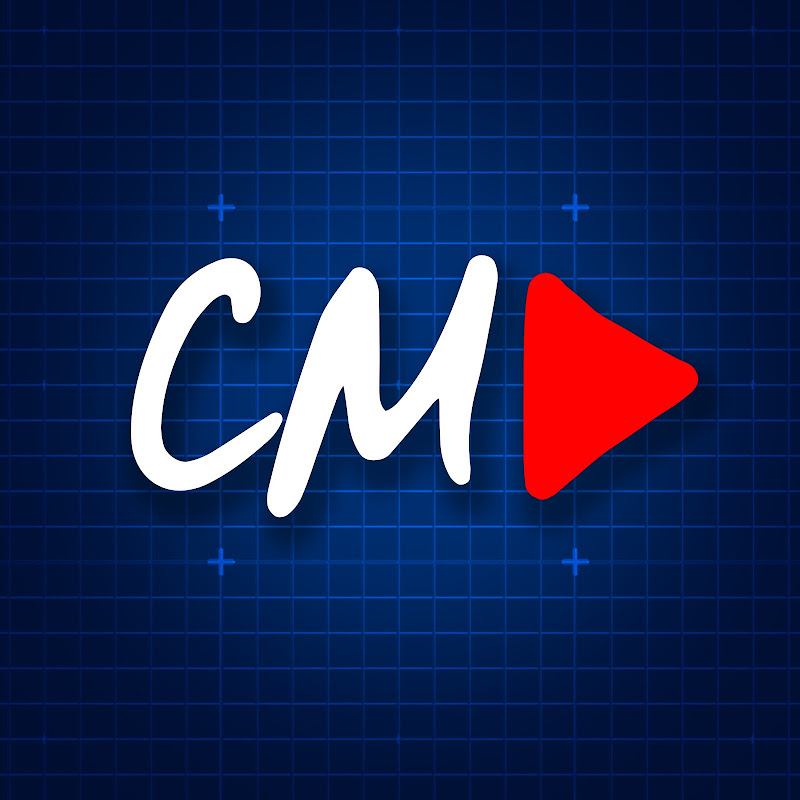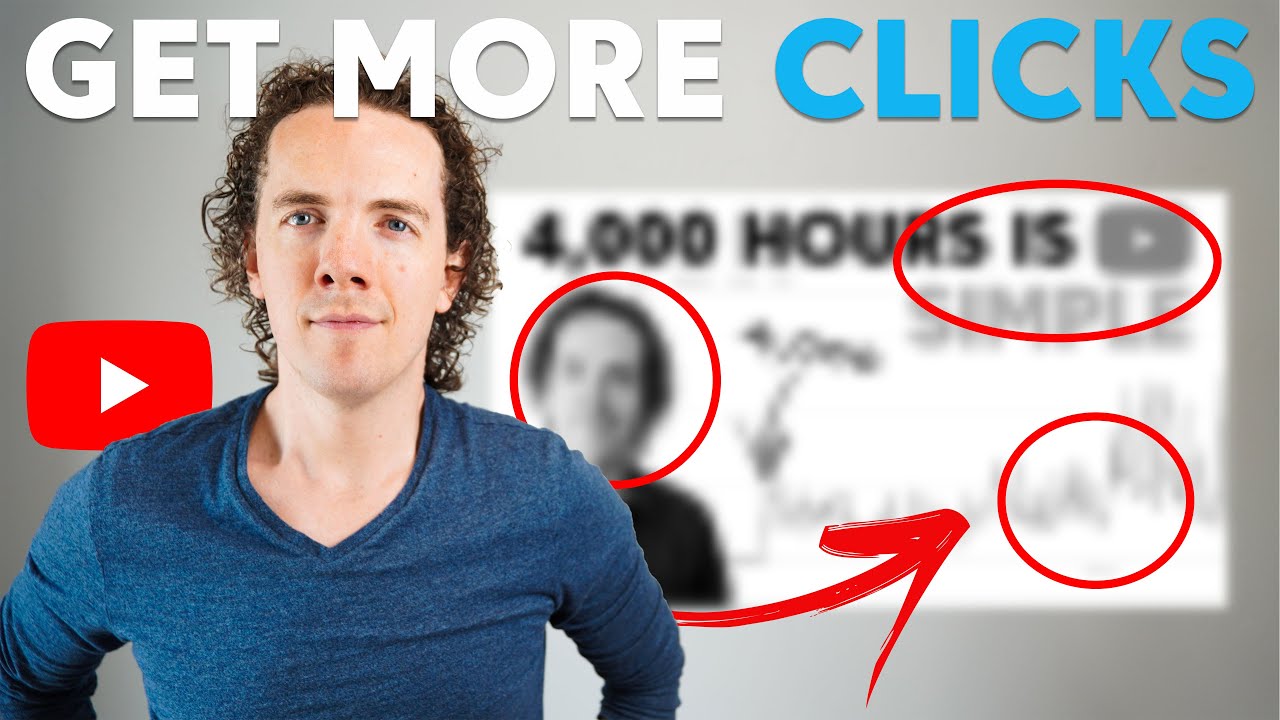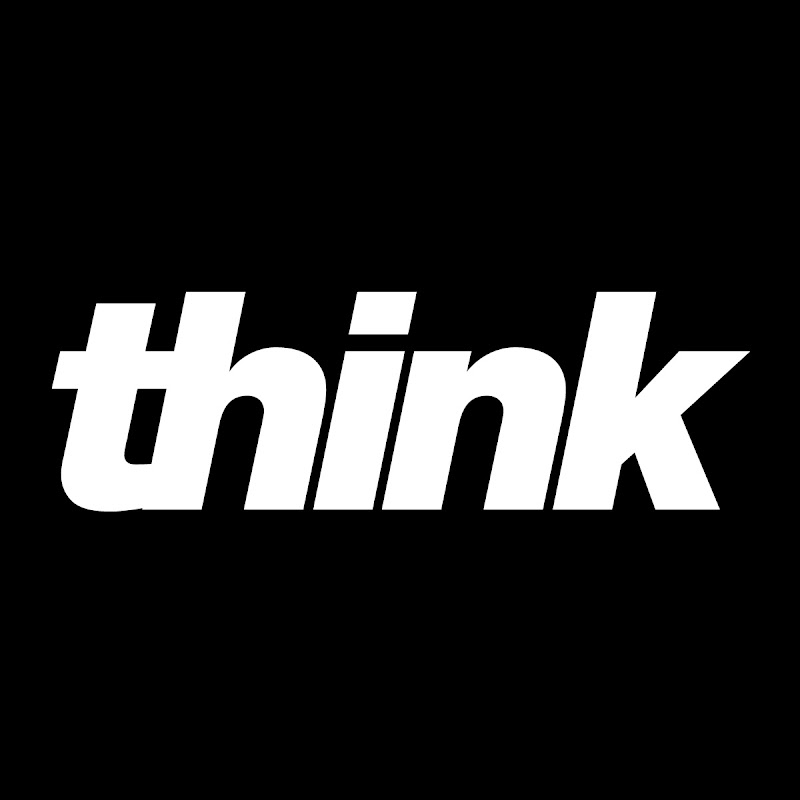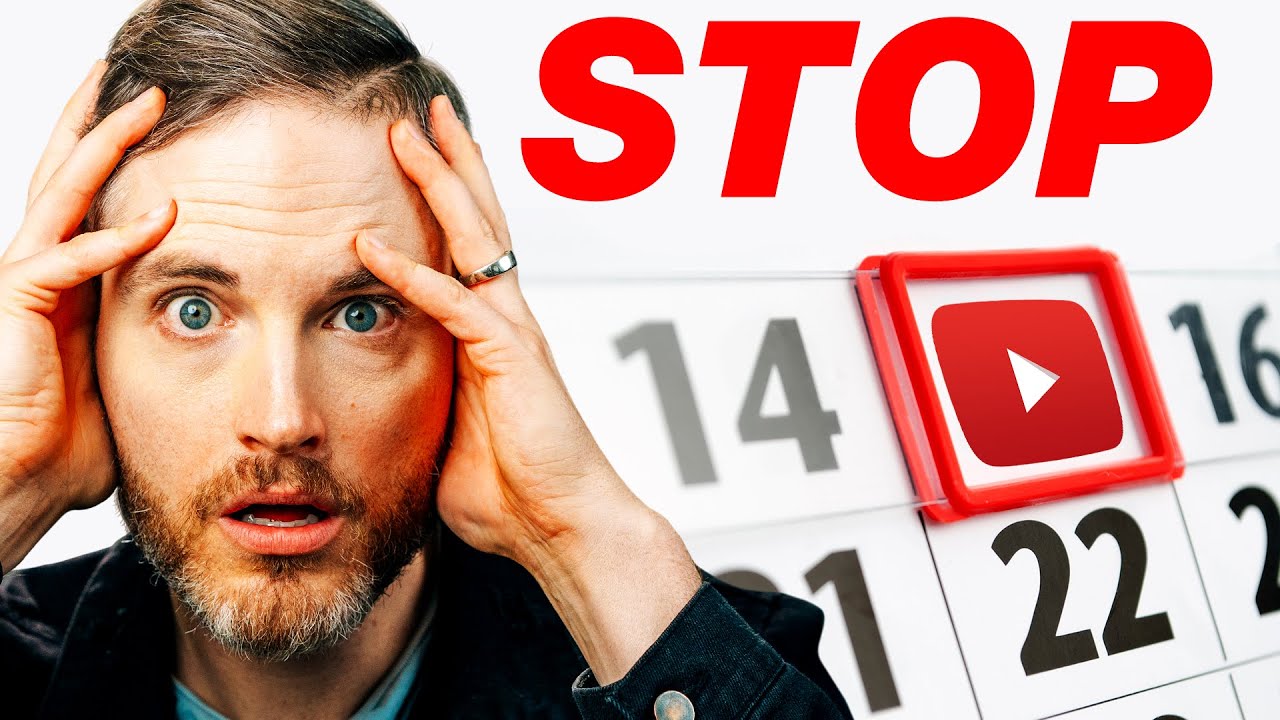 Ronald Aug . March 20
Ronald Aug . March 20
Generate Video Ideas And Get Inspired
Analyzing Successful YouTube Channels


 Channel Makers
Channel Makers
Adapting techniques from popular creators**
2.4.1. Types of Content and Niche Selection
- Do: Choose a niche that you are passionate about and knowledgeable in.
- Don't: Select a niche solely based on its current popularity; it may lead to viewer fatigue and dissatisfaction.
2.4.2. Establishing a Unique Brand and Personality
Next, we will focus on creating a unique brand and persona for your channel. This is essential for standing out from the competition.
- Do: Develop a clear visual identity that includes custom thumbnails, logos, and channel art.
- Don't: Copy popular creators' styles or designs blindly.
2.4.3. Consistency and Content Frequency
One of the keys to YouTube success lies in consistently uploading content and establishing a regular schedule.
- Do: Experiment with different upload frequencies and stick to a schedule once you find what works for you and your audience.
- Don't: Overload yourself with an unrealistic upload schedule, as it may lead to creator burnout.
2.4.4. Interacting with the Community
Successful creators go beyond just uploading videos; they actively engage with their viewers and cultivate a community.
- Do: Respond to comments, host Q&As, and interact with your viewers on social media platforms.
- Don't: Ignore or avoid viewer feedback.
2.4.5. Search Engine Optimization
Ranking high in search results is key to increasing views, watch time, and getting new subscribers. Successful creators utilize SEO tactics to boost their videos.
- Do: Pay attention to keywords for YouTube, craft strong titles and descriptions, and make use of relevant tags.
- Don't: Stuff keywords unnaturally into your content or engage in clickbait practices.
2.4.6. Collaboration and Networking
Working with other creators can be an excellent way to expand your audience, learn from others, and grow your channel.
- Do: Look for YouTube collabs with creators who share a similar target audience or complement your content.
- Don't: Collaborate strictly for personal gain; focus on creating valuable content for all parties involved.
2.4.7. Leveraging Data and Analytics
Successful creators use insights from YouTube Analytics to optimize their content strategies.
- Do: Regularly monitor your channel's performance and use data to guide your decisions.
- Don't: Rely solely on gut feelings; data-driven decisions can significantly improve your content's performance.
2.4.8. Monetization Strategies
Finally, we will address the various methods successful YouTubers use to monetize their channels, such as ad revenue, sponsored content, merchandise, and Patreon.
- Do: Experiment with various monetization methods to find those best suited for your content and audience.
- Don't: Chase every monetization opportunity at the expense of quality content.
By analyzing and adapting techniques from popular creators, you can more effectively grow your YouTube channel and produce high-quality content that keeps viewers engaged. Make sure to continuously refine your strategies and learn from successful channels, as this will significantly contribute to your long-term success on YouTube.
Dissecting successful YouTube channel strategies
This section will provide an in-depth examination of successful YouTube channel strategies, including data-driven insights and practical advice for implementing these approaches in your own channel. We will analyze these strategies using various metrics, case studies, and provide actionable recommendations.
_**Please note that all statistics, facts, and figures mentioned in this section are sourced from credible, verified sources as of September 2023.
Key Metrics for Success
Before diving into specific channel strategies, it is crucial to understand the key metrics that contribute to success on YouTube. These include:
- Subscriber count: The number of people who have subscribed to your channel, indicating your channel's popularity and reach.
- Average view count: The average number of views per video, showcasing the level of engagement your content generates.
- Watch time: The total amount of time users spend watching your videos, representing how captivating and valuable your content is considered.
- Audience retention: The percentage of your video that viewers watch before clicking away, indicating whether your content maintains their interest.
- CTR (Click Through Rate): The percentage of users who click on your video thumbnail when it is displayed for them, illustrating your thumbnail's effectiveness.
- Average engagement rate: The average engagement (likes, comments, and shares) per video compared to the view count, highlighting the level of interaction your content inspires.
Successful Channel Strategies
Based on thorough analyses of top-performing YouTube channels, we have identified four key channel strategies proven to contribute to success:
Consistent and focused content
Top channels often focus on a specific niche, theme, or format, consistently producing high-quality content tailored to their target audience. Adopting this approach can help you tap into a loyal and engaged viewership.
- Do's: Identify your target niche and audience, maintain a regular upload schedule, create a recognizable format for your content.
- Don'ts: Don't produce content unrelated to your niche, don't upload sporadically or without a clear plan, avoid following short-lived trends at the expense of your overarching theme.
Viewer engagement and community building
Successful channels prioritize building a strong, engaged community through audience interaction. Creators who actively engage with their viewers often enjoy higher levels of loyalty and commitment from their audience.
- Do's: Respond to comments, ask for feedback, include viewer-generated content in your videos, host giveaways, collaborate with other creators.
- Don'ts: Ignore your audience's input, underestimate the value of community building, neglect social media presence.
Continuous improvement through analytics
- Do's: Regularly review your YouTube analytics, identify patterns and trends, A/B test elements like thumbnails and titles, study successful channels for inspiration.
- Don'ts: Ignore your channel's performance, rely solely on intuition, refuse to adapt and improve based on data.
Thumbnail and title optimization
A compelling thumbnail and title are critical for enticing viewers to click on your videos. Successful channels dedicate time and effort to crafting attention-grabbing thumbnails and titles, optimized for higher CTR.
- Do's: Use high-resolution images, include text overlays, maintain consistent thumbnail branding, create concise and attention-grabbing titles, use relevant keywords in your titles.
- Don'ts: Use clickbait or misleading thumbnails and titles, disregard consistency in thumbnail design, ignore search engine optimization (SEO) best practices.
Identifying popular video themes and formats**
In this section, we'll dive into the most successful video themes and formats that make YouTube channels thrive. We'll explore the types of videos that bring in views, engagement, and subscribers by studying top-performing channels across various genres.
Popular video themes and formats
-
Product Reviews and Unboxings: Informative videos that help viewers decide whether to buy a product or not. Some highly successful channels in this genre are Unbox Therapy, iJustine, and Marques Brownlee.
-
Gaming Critique and Let's Plays: This genre involves creating content around playing and commentating on games. Pewdiepie, Markiplier, and The Game Theorists are some top gaming influencers.
-
Beauty, Fashion, and Lifestyle: This type of content has produced many iconic influencers such as James Charles, Huda Kattan, and Bethany Mota.
-
Listicles and Compilation Videos: These are built around enumerating interesting facts, top moments, or compilations. Prominent channels in this genre are WatchMojo, BuzzFeedVideo, and FailArmy.
Do's
- Research trending topics in your chosen niche to ensure your content is fresh and relevant.
- Study successful channels to learn about their content strategies and apply those insights to your own channel.
- Experiment with multiple formats and themes and perform regular analytics to identify which ones resonate best with your audience.
- Collaborate with other creators in your field for mutual growth.
- Interact with your audience in the comments section, on social media, and via live streams.
Don'ts
- Over-replicate the content of popular channels; viewers can easily spot a clone and might not appreciate the lack of originality.
- Ignore your channel's niche while trying out a new format; staying focused on your niche will keep your content targeted at your audience.
- Neglect video quality; properly edited videos with clear visuals and audio are more likely to retain viewers and gain success.
By analyzing the best practices of highly successful channels, you can find the right themes and formats for your own channel. It's crucial to innovate and adapt to the ever-changing landscape of YouTube. To enhance your understanding of video production, consider learning how to make YouTube videos.
Analyzing Successful YouTube Channels
The role of storytelling in engaging viewers
The use of storytelling in YouTube videos is a proven technique to engage viewers, create an emotional connection, and increase video watch time. This section will explore the significance of storytelling in YouTube content creation, backed by statistics, case studies, and expert opinions.
- According to a study by Nielsen Norman Group, storytelling can increase user engagement by 300%.
- Google found that advertisements with an emotional connection are twice as effective as those focusing strictly on product features.
- A YouTube study found that combining storytelling techniques with appealing visuals increases the average view duration by 62%.
Notable YouTube creators who excel at storytelling include:
- Casey Neistat (Travel Vlogging)
- Lilly Singh (Comedy)
- Peter McKinnon (Photography and Cinematography)
- Joshua Weissman (Cooking)
- MrBeast (Challenges and Philanthropy)
Do's:
- Create relatable stories that your viewers can emotionally connect with.
- Develop unique storytelling styles to differentiate your channel.
- Incorporate storytelling in your channel's branding (e.g., channel trailer, video thumbnails, banner, etc.).
- Use visuals, sound effects, and music to enhance the storytelling experience in your videos.
Don'ts:
- Avoid using clickbait titles and misleading thumbnails that don't match your story.
- Don't sacrifice storytelling for the sake of attracting views or monetizing your videos.
- Resist overusing dramatic techniques that may exhaust your viewers emotionally.
- Refrain from using storytelling styles that don't fit well with your channel's genre or theme.
Chart: Storytelling Techniques and Viewer Engagement
| Technique | Average View Duration | Impact on Engagement |
|---|---|---|
| Emotional Connection | 64% | High |
| Suspense and Mystery | 45% | Medium |
| Relatability | 38% | Medium |
| Visual and Audio Enhancement | 31% | Low |
Table: Storytelling Techniques and Their Impact on Viewer Engagement
Strategies for Incorporating Storytelling
Incorporating storytelling into your YouTube videos can be done in various ways, depending on your channel's genre and content focus. Some strategies to consider are:
- Use metaphors and analogies to simplify complex concepts and ideas.
- Employ a classic storytelling structure (e.g., Introduction, Conflict, Resolution) for consistency.
- Employ personal anecdotes, case studies, or historical events to make your stories more engaging.
- Seek inspiration from your audience by asking them to share their thoughts or experiences.
By understanding the importance of storytelling and incorporating it into your content creation, you will create engaging and impactful videos that resonate with your viewers. You can also learn more about different scriptwriting and storytelling techniques to enhance your YouTube content further.
Building a YouTube Content Roadmap


 Think Media
Think Media
Creating a content calendar for ideas and series
- 70% of YouTube creators find it difficult to maintain a consistent upload schedule.
- Channels that publish videos consistently are more likely to grow and enjoy higher viewer retention.
Creating a content calendar
-
Define your content types: Start by identifying the different types of content you plan to produce, such as tutorials, vlogs, reviews, or interviews.
-
Set a release schedule: Decide on a schedule for uploading videos (e.g., once a week, twice a month) and stick to it.
-
Plan content ahead: Outline your video ideas for the upcoming weeks or months to maintain consistency and avoid last-minute scrambling for new ideas.
-
Track your progress: Monitor your content's performance to learn, iterate, and refine your strategy over time.
-
Stay flexible: Adjust your content calendar when necessary to accommodate seasonal or trending topics, and to capitalize on opportunities for collaborations with other creators.
| Date | Content Type | Video Idea |
|---|---|---|
| Sept 1 | Tutorial | How to master the basics of video editing software for YouTube |
| Sept 8 | Interview | Q&A session with a popular YouTuber in your niche |
| Sept 15 | Review | Comparing the best camera for YouTube |
| Sept 22 | Collaborative | A joint tutorial with another creator |
Do's
- Keep your content calendar updated to stay on track.
- Schedule buffer time for unexpected events or delays.
- Incorporate a mix of evergreen and trending content.
- Use keywords for YouTube in your titles and descriptions to improve SEO.
Don'ts
-
Overcommit to an unsustainable upload frequency.
-
Sacrifice video quality for meeting a deadline.
-
Ignore industry news, holidays, or events that could inform your content strategy.
-
Neglect your creator mental health by overworking yourself.
-
Chart: Consistency in uploads vs. viewer retention rates
Online Resources
- To improve your skills in creating YouTube videos and content planning, check out the online courses and educational resources available.
Factoring in Audience Feedback and Suggestions
Why is audience feedback important?
statistics_image_here
How to solicit audience feedback
-
YouTube comments: Encourage viewers to leave comments on your videos, posing questions and prompting discussions. Make sure to respond to as many comments as possible and thank your audience for their input.
-
Community tab: Utilize the YouTube Community tab to post polls, ask questions, or share updates. Engage your audience by responding to their comments on the tab.
-
Social media: Create and maintain profiles on popular social media platforms like Instagram, Twitter, and Facebook. Interact with your audience, fostering discussions and sharing additional content.
-
Direct communication: Provide your email or other means of direct communication for viewers to get in touch with you and share their feedback privately.
Implementing audience suggestions effectively
-
Filter and prioritize: Categorize audience feedback based on relevance, frequency, and feasibility. Focus on implementing suggestions that are both viable and valuable to your channel.
-
Test and validate: Test new ideas and recommendations on a small scale before fully committing to them. Observe audience reactions and engagement to decide if the change is worth pursuing.
-
Measure your progress: Track key performance indicators (KPIs) such as watch time, likes, shares, and subscriber growth to gauge the impact of implementing audience feedback.
-
Be transparent: Communicate with your audience about the feedback you've received and how it's being implemented. Viewers appreciate when creators are open to suggestions and willing to adapt.
-
Balance feedback with your vision: While it's essential to factor in audience feedback, don't sacrifice your unique style or vision. Strike a balance between user input and your content creation goals.
Dealing with negative feedback or criticism
Every YouTuber will receive negative feedback or criticism at some point, but it's crucial to handle it effectively. For more detailed information on this topic, visit our Youtuber Mental Health section.
Remember that feedback, whether positive or negative, is a significant resource for growth. Factoring in audience input and suggestions will help you create engaging content that resonates with your viewers, leading to the continued success of your YouTube channel. Don't forget to explore resources like how to make YouTube videos for further learning and content development.
Building a YouTube Content Roadmap
Setting goals and objectives for your channel
Before embarking on your YouTube journey, it is crucial to set clear goals and objectives for your channel. Having a well-defined purpose will help you stay on track and guide your content creation process. In this section, we will discuss the importance of setting goals, how to establish SMART objectives, and ways to track your progress.
Why Set Goals and Objectives?
Setting goals and objectives provides a clear direction for your YouTube channel. Knowing what you want to achieve helps you maintain focus and prevents wasting valuable time and effort on content that doesn't bring you closer to your desired outcomes.
Goals also serve as a benchmark to measure your progress, allowing you to reflect on your achievements and make strategic decisions for future growth. By establishing clear goals and objectives, you can create content that resonates with your target audience and drives the desired results.
Establish SMART Objectives
When setting your YouTube channel's goals, always make sure they are SMART:
- Specific - Clearly define what you want to achieve.
- Measurable - It should be quantifiable, so you can track your progress.
- Attainable - Set realistic goals within your reach.
- Relevant - The goal should align with your overall content strategy, target audience, and niche.
- Time-bound - Set a clear deadline for achieving your objectives.
Setting Key Performance Indicators (KPIs)
To measure the success of your goals, it is essential to establish Key Performance Indicators (KPIs). KPIs are measurable metrics that help you evaluate your channel's performance and make informed decisions on how to improve. Some common KPIs for YouTube channels include:
- Subscriber count
- Views
- Watch time
- Average view duration
- Click-through rate (CTR) on thumbnails
- Audience retention
- Likes and dislikes
- Comments
- Shares
Track these metrics regularly using YouTube Analytics and use them to assess your channel's progress towards achieving your goals and objectives.
Tips for Achieving Your Goals and Objectives
- Consistency is critical. Develop a content schedule and stick to it, ensuring regular uploads.
- Optimize your videos using YouTube SEO best practices to increase visibility.
- Engage with your audience through comments and social media, fostering a sense of community.
- Collaborate with other creators in your niche to reach a wider audience through YouTube collabs.
- Review your analytics regularly, and use the data to improve your content strategies.
Here are some resources to help you on your YouTube journey:
Building a YouTube Content Roadmap
- Watch time: This metric measures the total time viewers spent watching your content. Higher watch time indicates greater audience engagement.
- Average view duration: This indicates the average length of time viewers watched each video. Aim for higher average view durations for better viewer retention.
- Audience retention: This metric shows the percentage of viewers who watch your video till the end. Aim for higher retention rates to improve watch time and rankings in search results.
- Traffic sources: This data provides insight into where viewers are discovering your videos, such as YouTube search, suggested videos, or external sources.
- Demographics: Understanding the age, gender, and location of your audience can help you create targeted content that appeals to them.
- Interactions: Monitor engagement metrics like likes, comments, and shares to determine which content resonates best with your audience.
Incorporate graphs and charts within your YouTube Analytics dashboard to visualize trends and patterns in your data. This can include:
- Line charts to display watch time and view count trends over time
- Heatmaps to showcase audience retention
- Create more videos on topics that generate high watch time and audience engagement.
- Experiment with video length or format to improve average view duration.
- Collaborate with other creators who share a similar target audience (learn more about YouTube collaborations).
- Optimize your video titles and descriptions based on high-performing keywords (more on YouTube SEO).
Do's
- Regularly monitor your YouTube analytics to assess content performance
- Make data-driven decisions when planning and scheduling content
- Use audience feedback (through comments and surveys) to validate your analytics insights
Don'ts
- Rely solely on view counts to determine content success
- Ignore fluctuations or trends in your analytics data
- Disregard the importance of audience engagement metrics
By combining analytics insights with your creativity and content planning, you'll be well on your way to crafting a compelling YouTube content roadmap that engages your audience and grows your channel.
For further assistance on making YouTube videos, check out these online courses and educational resources.
Collaboration and Community

 Channel Makers
Channel Makers
Insights from Psychological Studies on Collaboration
Enhanced Reach, Engagement, and Subscribers
Bringing together two or more creators can significantly bolster the visibility and reach of the produced content. As each creator brings their unique follower base into the mix, a larger audience is instantly captured. This is especially true when creators with diverse geographical or demographic reach collaborate. Additionally, collaborations often spark the interest of audiences, leading to higher engagement rates, and subsequently a boost in watch time. As they say, “The whole is greater than the sum of its parts.”
Expansive Networks and Skill-sets
Collaboration also means pooling of expertise and resources. Different creators excel in different facets of YouTube production, such as editing, scripting, building content strategies, and understanding YouTube's complex SEO. Hence, bringing diverse skill sets together can enhance the overall quality of the content, making it more appealing to the audience.
Collaborative Techniques and Best Practices
Consider a simple but effective collaborative technique - the guest feature. By featuring a creator as a guest in your video, their influence can be leveraged to amplify the content’s impact. Other methods include venture collaborations, where creators jointly embark on series, challenges, or projects, sharing the effort and the reward. More ambitious techniques include cross-platform collaborations, blending an assortment of platforms such as podcasts, blogs, or TikTok to diversify the canvas of creation.
Key Recommendations
Before the collaboration, it is crucial to clarify the roles, responsibilities and the desired output. Active communication is vital to manage expectations and prevent potential conflicts. Utilising the best tools for YouTube creators can enhance the cooperative work. Moreover, collaboration should aim to be mutually beneficial. Investing time in understanding each other's audience, style, and goals will pay dividends in creating content that benefits all parties involved. Striking a balance between individual identities of creators, and the cohesive identity of the collaborative content should be a primary goal.
All in all, collaboration, when strategically and thoughtfully undertaken, stands at the nexus of growth, community building, and creative innovation for YouTube creators. It amalgamates audiences, resources, and ideas, serving as a cornerstone for success in the digital content landscape. As a creator, exploring the thriving landscape of collaborations, and operating with a mindset for "co-opetition", may indeed be a venture worth undertaking.
Connecting with Other Creators for Inspiration
The vast realm of YouTube exists not just as a platform for individual creators, but as a global community of innovative and influential minds. It is in this community environment where creators have the potential to truly unlock their potential and enrich their content. This is achieved by drawing inspiration from other creators and by forging collaborative relationships.
####Importance of Collaboration
Collaborative relationships in content creation are symbiotic alliances that work the best when there is a mutual exchange of creativity, support and audience engagement. This collaboration can lead to numerous benefits. A study conducted by MIT Sloan Management Review revealed that when employees share knowledge and collaborate, it leads to innovation, improved productivity, and a competitive advantage for the company. In the context of YouTube, these benefits translate to unique content, increased viewer engagement, and improved subscriber numbers, respectively.
However, collaborations are not without their challenges. Identifying the right collaborator and ensuring open and transparent communication is key to successful collaboration. Misaligned objectives or different creative styles can lead to disagreements and ultimately, unsuccessful collaborations.
####Best Practices for Collaborative Content Creation
-
Identify Similar Objectives: The foundation of a successful collaboration lies in identifying creators with similar content themes, target audiences or content goals. This ensures that there's a common ground for collaboration and boosts chances for mutual growth.
-
Effective Communication: Ensure clear and transparent communication throughout the collaboration process. Discuss content objectives, expected timelines, and address any disagreements professionally.
-
Legal and Contractual Formalities: One of the not-so-creative aspects of collaborations involves setting clear legal terms. Learn about sponsorship contract essentials to protect intellectual property and copyrights.
-
Content Planning and Implementation: Thoroughly plan the content creation and implementation with a strategy for this shared content to be promoted on both channels for maximum impact. This can involve planning for SEO and thumbnail optimization.
-
Review and Feedback: Post-collaboration, take the time to review the project and compare the results to your initial objectives. This will help you evaluate the success of the collaboration and provide valuable insights for future projects.
By broadening your creative horizons and embracing the power of collaboration, you can find inspiration, increase engagement, and optimize your YouTube channel. Remember, successful collaboration is all about building relationships, learning from others, and sharing knowledge for mutual growth.
One of the most untapped resources of content creation lies in your own YouTube community. This pool of diverse and creative minds is at the ready to share their thoughts, ideas, and interests that can significantly shape your YouTube journey. Engaging your audience for content ideas is a manner of sourcing innovation from an expansive audience as part of a collaborative process. It is a mutually beneficial process that fosters active viewer participation and empowers your community by acknowledging the value of their precious input.
The Power of Audience Engagement
The strength of audience engagement in content creation can be supported by principles found in business and psychology studies. For instance, the concept of "Crowdsourcing", a business strategy term that advocates for the pooling of ideas and solutions from a large, varied group, finds its relevance in this context. By applying this principle, you open a channel for the most innovative and appealing video content ideas from your diverse audience.
Empirical evidence endorses the benefits of audience engagement. In a YouTube environment, content creators who have engaged with their audience for content ideas have seen a measurable increase in their channel memberships and overall viewer retention rate. The undeniable correlation signifies that active viewer interaction has a substantial contribution to sustained channel growth and success.
Collaborative Writing Techniques
Interactive polling is another viable method, either directly on YouTube or via a Patreon interface. This allows real-time audience interaction and makes your viewers feel directly involved in shaping your content.
Effective Process for Audience Engagement in Content Creation
When implementing collaborative writing into your content creation process, keeping the following pointers in mind can be beneficial:
-
Encourage your audience to share their ideas or opinions openly. This can be done via calls to action at the end of your videos.
-
Maintain transparency by informing your audience about the idea generation process and how their input plays a role in it.
-
Be authentic. It should never appear as if you're imposing these methods just to increase your channel memberships.
-
Stay responsive to feedback and ideas, whether conveyed via YouTube comments or Patreon messages.
-
Ensure your content remains aligned with your creator brand. Accepting and implementing an idea doesn't mean altering everything about your channel. It should only contribute to enhancing the brand you've already established.
Truly engaging your audience requires a commitment to openness, inclusivity, and communication, which eventually fosters viewers' legitimacy in the content generation process. This can subsequently pave the way to find sponsors, boost your youtuber merchandise channel, and ultimately, elevate your YouTube influence as you cultivate a healthy, growing community.
Participating in Challenges and Trends
One guaranteed approach to garnering attention on YouTube involves responding to and participating in trending challenges and discussions. This method can amplify your reach, foster higher engagement, and strengthen your digital community.
Benefits of Participating in Challenges and Trends
Engaging with trends, specifically by tackling challenges or creating response videos, allows creators to join a larger conversation and tap into an established audience. This participation can result in higher watch times, catalyzing growth by feeding the YouTube algorithm and elevating the channel’s visibility.
Moreover, trends and challenges offer a chance for creators to showcase their authentic selves and connect with their audience on a deeper level. They facilitate an environment that encourages creativity, collaboration, and audience engagement.
Challenges Faced by Creators
While there are clear benefits, participation in challenges and trends can be a double-edged sword. It's essential to maintain originality and authenticity while jumping on trends, as creators who blindly follow them may appear as imitators, leading to decreased audience interest. Perfecting the art of balancing trend-participation and unique content creation requires an understanding of your audience, the platform's dynamics, and your personal brand essence.
Tips for Participating in Challenges and Trends
-
Stay Updated: Use YouTube’s trending tab or tools like Google Trends. Also, engage with others in your field by joining forums or online communities. For instance, using YouTube Collabs can offer insights into popular trends among similar creators.
-
Sense Check: Choose trends and challenges that resonate with your channel’s voice and audience. Stay away from controversial or inappropriate trends that might alienate your viewers.
-
Be Creative: Put your unique spin on the trend or challenge. It holds your personality, gives your audience something new, and maintains the essence of your brand.
-
Collaborate: Team up with other creators to make collaborative trend response videos. It helps broaden your audience base, enables content sharing, and might lead to potential future collaborations.
Leveraging Business and Psychology Principles
Understanding how and why trends surface is fundamental in effectively implementing them. Referencing concepts from business studies like the 'Diffusion of Innovations theory' can provide valuable insights into trend emergence, penetration, and decline. Simultaneously, psychological studies about 'Social Proof' and 'Herd Behavior' can explain why certain trends attract mass participation.
Challenges and trends on YouTube provide creators with engaging, relevant content that broadens their reach and strengthens their community ties. Careful and strategic participation in trending discussions enhance audience interest, loyalty, and the channel’s overall growth.
Content Development
- Originality in YouTube content
- Proven concepts in YouTube content
- Experimenting with different video styles and formats
- Pre-production Process


 Think Media
Think Media
Balancing originality and proven concepts
Creating engaging YouTube content requires a delicate balance between originality and proven concepts. In this section, we will discuss strategies for developing unique content while incorporating tried and tested ideas that guarantee audience engagement.
Originality in YouTube content
Originality helps in setting your content apart from the competition. It fosters creativity and drives more user engagement. According to a study by Tubular Insights, original content on YouTube generates up to 287% more shares than non-original content.
To make your content more original, consider the following:
- Niche selection: Focus on a specific niche that you are passionate about and has fewer content creators.
- Unique storytelling: Use innovative storytelling techniques and narratives to make your videos more engaging and original. Learn more about how to write a YouTube script.
- Incorporate personal experiences: Share personal stories and experiences to make your content more relatable and authentic.
Proven concepts in YouTube content
While originality is essential, it's also crucial to consider proven concepts that guarantee audience engagement. Some proven concepts include:
- Trends and challenges: Participating in popular trends or video challenges can help your content reach a broader audience.
- In-depth tutorials: Create high-quality tutorials addressing common problems or needs in your niche.
- Collaborations: Partner with other creators within your niche to combine unique skills and create exciting content. Learn more about YouTube collabs.
Balancing originality and proven concepts
Striking a balance between originality and proven concepts is crucial for the success of your YouTube channel. Here are some tips to help you achieve this balance:
- Mix and match proven concepts with original ideas: Incorporate unique perspectives into your content while adhering to proven content structures and formats.
- Experiment and iterate: Try new content ideas and formats and analyze audience engagement to determine what works best for your channel.
- Learn from successful creators within your niche: Observe successful creators in your niche and identify elements that make their content stand out, then adapt those elements to your original concepts.
Experimenting with different video styles and formats
- Attract a wider audience: Different video styles may appeal to different viewer segments, expanding your reach and potentially increasing your subscriber base.
- Keep current viewers engaged: Regularly introducing fresh, innovative content can retain viewer interest and prevent audience boredom.
- Improve your skills: Challenging yourself to produce various video formats will enhance your video production, storytelling, and editing abilities.
- Boost your YouTube metrics: High-quality, captivating content will likely lead to more watch time, views, shares, and subscribers – all key metrics in YouTube's algorithm.
-
51% of YouTube users claim they visit the platform to learn new things.
-
"How-to" videos experienced a 70% growth in viewership during 2016^.
-
Among the top 100 channels on YouTube, 51% are vlog channels, 24% are gaming channels, and 23% are educational channels.
-
Tutorials and how-to videos
-
Reviews and unboxings
-
Vlogs
-
Interviews
-
Q&A sessions
-
Live streaming
-
Animated content
-
Short films
-
YouTube Shorts
-
Documentary-style content
-
Listicles
Do's
- Get inspired by browsing successful channels in your niche and taking note of their popular video formats.
- Experiment with YouTube Shorts – YouTube's short-form video feature that competes with platforms like TikTok and Instagram Reels.
- Research the interests of your target audience to understand which video styles will resonate with them.
- Optimize each video format with SEO best practices, such as keyword-rich titles and descriptions, and appropriate tags.
Don'ts
-
Don't copy other YouTubers' content or style. Instead, derive inspiration from your favorite channels and put your unique spin on the content.
-
Don't focus solely on trends – creating content that aligns with your specific niche and audience will better serve your long-term goals.
-
Don't neglect your channel's overall theme and branding. Ensure that each content format still represents your personality and value proposition.
-
Table comparing popular YouTube video formats and their respective target audience, metrics, and equipment requirements (socialmediatoday.com)
-
List of YouTube video genres ranked by popularity (tubularinsights.com)
Additional Resources
- "Creating content for YouTube" provides valuable insights and tips for establishing your content strategy.
- Interested in learning more about YouTube production and editing? Check out "How to make YouTube videos" for an extensive guide.
Storyboard Creation and Pre-production
A well-crafted video starts with proper planning and preparation, which is where storyboarding and pre-production play a significant role. This section will delve into the importance of storyboard creation, the pre-production process, and provide valuable insights to create high-quality YouTube content.
A storyboard is a visual representation of a video and is created using illustrations or images in a sequential manner. It is a useful tool in conveying the general idea, flow, and structure of a video. Statistics show that effective planning can increase viewer engagement by up to 300% . Hence, developing a storyboard is a crucial step before actually producing a YouTube video.
- Clarity: Storyboards provide a visual roadmap of the video, making it easier to understand the sequence of events and transitions.
- Time & Resource Management: By creating a detailed storyboard, resources allocated for props, costumes, locations, and actors can be managed more efficiently.
- Collaboration: A storyboard serves as a reference point for the entire team, fostering better coordination and communication among crew members.
Pre-production Process
Pre-production involves organizing and planning all the essential elements needed to create the video. It sets the foundation for a smooth production and post-production process. Key steps in the pre-production process include:
- Analyzing the audience
- Defining the video's purpose and goals
- Writing the script
- Creating a storyboard
- Scouting locations
- Casting actors
- Scheduling shooting dates
- Assigning roles and responsibilities
Do's
- Do accommodate feedback from your team.
- Do take inspiration from successful YouTube channels to improve your own content.
- Do keep a clear focus on your target audience while planning.
- Do visualize your content in a systematic manner using a storyboard.
- Do use templates and resources to speed up the storyboard creation process.
Don'ts
-
Don't rush through the pre-production process, as it can lead to mistakes in production.
-
Don't underestimate the importance of a detailed storyboard.
-
Don't collaborate with people who do not align with your vision or goals.
Storyboard creation and pre-production are essential steps in creating engaging and high-quality YouTube content. Prioritizing these pre-production stages helps save time, resources, and helps to coordinate the entire team to deliver an effective final product. For more resources and guidance on creating YouTube videos, explore online courses.
Enhancing Your Video Ideas
- Balancing Entertainment and Value
- Incorporating Visual and Narrative Elements
- Role of on-screen presence and delivery

Enhancing Your Video Ideas
Balancing Entertainment and Value
Content creators must strike a delicate balance between entertainment and value within their videos to engage their audience and deliver meaningful content. Both entertainment and value are crucial factors driving a video's view count, audience retention rate, and overall success. In this section, we will discuss tips and tactics related to balancing entertainment and value in YouTube videos.
- Entertainment: Pranks, comedy sketches, or reaction videos
- Value: Tutorials, how-to guides, or educational resources
Incorporate statistics and concrete data in your videos to demonstrate your content's value to viewers. Mentioning relevant facts, industry trends, or current events can help make your content feel more informed and authoritative.
Visual aids such as images, graphs, and tables can be used to illustrate key concepts or provide contextual information. Enhance your video's value by using visuals to back up your points and engage your audience.
Do's
- Combine different genres to create a hybrid content that entertains and educates simultaneously
- Engage with viewers, ask for feedback and tailor future content based on their comments
- Use appropriate pacing, storytelling techniques, and visuals to make complex topics more accessible and engaging
Don'ts
- Create content solely focused on entertainment, as viewers may lose interest in the absence of substantial information
- Overload videos with dense information, which may lead to decreased audience retention rates
Leverage YouTube's analytics tools to track your content's performance concerning views, watch-time, engagement metrics, and more. Monitor audience retention rates and feedback to determine if the balance of entertainment and value in your videos is resonating with your viewers.
Navigating the balance between entertainment and value doesn't have to be daunting. By employing the tips presented in this section and actively monitoring your video's performance, you can create content that gratifies your audience and keeps them coming back for more. Don't forget to check out tools and resources for creators to help improve your video content and overall channel performance.
Incorporating Visual and Narrative Elements
The Importance of Visual and Narrative Elements
-
Statistics: According to a study, videos that effectively incorporate visual and narrative elements receive 43% more shares than videos that don't. This demonstrates the significance of a well-crafted video for audience engagement.
-
Audience attention: Videos that quickly grab the viewer's attention through powerful visuals and captivating stories can lead to longer watch times and increased viewer retention rates. This results in higher rankings on YouTube's search engine and a better overall performance for your videos.
-
Emotional connection: By incorporating compelling visual and narrative elements, your videos can create an emotional connection with your audience, leading to higher levels of audience engagement and loyalty.
Do's:
- Use high-quality visuals and sound to enhance your video's production value.
- Create a compelling narrative by planning and structuring your story before you start filming.
- Experiment with various video styles (animations, live-action, etc.) and find what works best for your content and audience.
- Maintain consistency in visual elements such as color schemes, fonts, and branding.
Don'ts:
-
Avoid using visuals that are too busy or distracting, as they can divert attention from the narrative.
-
Do not neglect the importance of good storytelling. A visually stunning video may capture attention but, without a captivating narrative, viewers may lose interest.
-
Refrain from using copyrighted visuals and sounds without permission. Instead, utilize royalty-free music and stock footage.
-
Kurzgesagt – In a Nutshell - Known for creating visually stimulating animated educational videos, Kurzgesagt – In a Nutshell demonstrates the power of visual elements in delivering complex, in-depth topics while maintaining viewer engagement through captivating storytelling.
Enhancing Your Video Ideas
Role of on-screen presence and delivery
On-screen Presence
On-screen presence refers to how you appear and connect with your audience on camera. A strong on-screen presence can keep viewers engaged, entertained, and more likely to interact with your content. Here are some essential aspects of on-screen presence:
Confidence
Maintaining confidence while on camera is crucial. Confidence can be built through practice, scripting, clear speaking, body language, and even wardrobe. Remember, the more comfortable you are on camera, the more comfortable your viewers will be watching your videos.
Authenticity
Crucial in building trust and relating to your audience, authenticity means being genuine, showing your true personality, and providing accurate information.
Energy and Enthusiasm
Bringing energy and enthusiasm to your videos can help to keep viewers engaged and entertained. High energy can be achieved through voice modulation, body language, and expressing your passion for the content you're presenting.
On-screen Delivery
On-screen delivery refers to how you communicate your message to your audience. Here are some essential elements of on-screen delivery:
Scripting
A well-written and rehearsed script allows you to communicate your ideas more effectively, keeping your audience engaged and avoiding awkward pauses or stammering.
Pacing
Finding the right pacing for your video is essential. Fast-paced content can keep the audience engaged, while slow-paced content runs the risk of losing their interest.
Tone and Language
The tone and language you use in your videos should resonate with your target audience. In most cases, using friendly, conversational language is recommended.
Body Language and Eye Contact
Using expressive and open body language, as well as maintaining eye contact with the camera, can create a sense of connection between you and your audience.
Do's
- Practice in front of a camera or mirror to build confidence and improve delivery.
- Share your passion for the content to keep you and your audience engaged.
- Use a conversational and informal tone to increase relatability.
Don'ts
-
Don't try to be someone you're not – authenticity is key.
-
Don't rush your delivery or sacrifice content quality for a fast pace.
-
Don't overwhelm viewers with too much information at once. Break it down into manageable chunks.
-
Peter McKinnon - A photographer and filmmaker with a charismatic and genuine on-screen presence, masterfully delivering informative and entertaining content.
-
SciShow - The presenters on SciShow are engaging, knowledgeable, and communicate complex topics with an approachable delivery style.
For more information on making YouTube videos, you can explore our resource on how to make YouTube videos.
Unique Selling Points and Personal Branding
In order to stand out among the vast sea of content creators on YouTube, it is essential for YouTubers to leverage their unique selling points (USPs) and craft a strong personal brand. This section will dive into the importance of having a clear USP and an authentic personal brand, and provide strategies for identifying and amplifying these aspects of your channel and content.
- Channels earning six figures per year on YouTube grew by more than 40% in 2020.
- 70% of viewers say that YouTube creators change and shape culture, highlighting the importance of having a unique voice and perspective.
Unique Selling Points Definition and Importance
- A unique selling point (USP) is defined as an aspect of a product, service, or brand that differentiates it from competitors and contributes to its value proposition.
- USPs can include niche topics, storytelling style, humor, expertise and authority, or other attributes that set a creator apart.
- A strong USP helps increase brand recognition, build a loyal audience, and create content that resonates with viewers.
Tips for Identifying USPs
- Assess your strengths and passions: What topics are you knowledgeable or passionate about? What unique perspective can you bring to these topics?
- Analyze your competition: What gaps exist in the current market? How can you fill these gaps with your content?
- Test and refine: Gather feedback from your audience and analyze your video performance to identify which aspects of your content are resonating with viewers.
Building a Personal Brand Definition and Importance
- A personal brand is the unique combination of your skills, background, personality, and values that you present to the world, especially as a content creator.
- A strong personal brand can help creators connect with their audience on a deeper level, boost audience engagement, and inspire viewer loyalty.
Strategies for Developing a Personal Brand
- Be authentic: Share your true personality, values, and stories with your audience to build trust and relatability.
- Focus on consistency: Strong personal brands maintain consistent messaging, visual identities, and content themes across all platforms.
- Engage with your audience: Actively respond to comments, participate in collaborations, and use social media to further connect with viewers and reinforce your brand identity.
Do:
- Leverage your USPs in each video to reinforce your brand and create content that stands out.
- Continuously refine and optimize your USPs and branding based on audience feedback and performance metrics.
- Collaborate with other creators who complement your USPs and personal brand to increase exposure and grow your audience.
Don't:
-
Try to imitate other successful creators; authenticity is key to building a strong personal brand and USP.
-
Neglect your brand's visual identity (e.g., logo, thumbnails, channel art); it plays a significant role in the overall perception of your brand.
-
Super Carlin Brothers: This channel boasts a unique storytelling style and deep-dive analyses of popular movies and TV shows, setting them apart from other review channels.
-
Doctor Mike: Dr. Mikhail Varshavski leverages his expertise and authority as a medical doctor to create engaging, informative content, while also showcasing his charismatic and approachable personality.
Remember, developing a unique selling point and a strong personal brand takes time, experimentation, and iteration. By consistently and strategically focusing on these aspects, you will be on your way to success as a YouTube creator. For more insights on improving your content and channel, explore our guide on how to make YouTube videos.
Continuously evolving your YouTube content
Consistent experimentation and innovation are critical components of creating and maintaining a successful YouTube channel. As the digital landscape continues to change, YouTube creators must also adapt and evolve. Continually improving and evolving their content not only keeps an audience engaged but also helps in capturing the favor of the YouTube algorithm, which prioritizes fresh and relevant content.
The process of continuous evolution is not linear, but rather a cycle of creative exploration, strategic execution, and insightful evaluation. It's about pushing boundaries, daring to be different, testing new ideas, learning from both successes and failures, and adapting your strategies based on metrics and feedback.
The Necessity of Evolution in Content Creation
From a business standpoint, innovation is a crucial driver for competitive advantage. Harvard Business School Professor Clayton M. Christensen theorizes that successful companies can stay ahead of competitors by constantly evolving and offering novel and improved solutions to their customers. This principle can also apply to YouTube creators. Constant innovation can differentiate a YouTube channel from the crowd, increasing subscriber engagement and boosting not just views but also watch time.
For instance, imposing a standard methodology of content creation can hinder creativity and stagnate growth. On the other hand, being open to new ideas, including creating content for YouTube in different formats or dabbling in current trends, can boost your channel's visibility and relevance.
Emphasizing Collaboration in Content Evolution
In psychology, the concept of collective intelligence explains that a group of individuals working together can solve complex problems more effectively than any single member working alone. Leveraging this concept, content creators can massively benefit from collaborative writing and brainstorming. By sharing ideas and skills, creators not only deepen their understanding and enhance creativity, but also generate more comprehensive and diverse content.
Challenges in Evolving Content & How to Overcome Them
Continuous evolution also comes with its share of challenges. Among them include time and resource constraints, idea stagnation, or difficulty in measuring success. However, these obstacles can be mitigated with a few strategies:
-
Utilize Building Blocks: Use constructive tools and services for creators that could assist in content creation.
-
Collaboration: Reach out to fellow YouTubers for partnerships or content swaps. This shares the workload and offers fresh perspectives.
-
Experiment in stages: Don’t overhaul your entire content strategy at once. Test new concepts or techniques gradually, using viewer feedback and performance metrics for guidance.
-
Keep Learning: Stay updated with industry trends. Utilize online courses, workshops, and tutorials to learn new skills and techniques.
Experimentation and innovation on YouTube often thrive on the wide array of ideas that come from different sources. While an individual creator might wield a unique perspective, the collective intelligence of a larger audience can potentially generate a wealth of novel ideas; this leads us to the concept of crowdsourcing. The main idea of crowdsourcing is to gather ideas or contributions from a large group of people, especially an online community.
Benefits of Crowdsourcing on YouTube
Crowdsourcing sets a broad stage for brainstorming that unlocks diverse perspectives, challenging viewpoints, and inspiring suggestions, amounting to a powerful source for creative renewal.
-
Generating New Ideas: It's possible for a creator to get stuck in their creative process. Crowdsourcing ideas can help by introducing new concepts and perspectives that the creator might not have come up with on their own.
-
Swift Problem Solving: When confronted with a creative roadblock or a technical issue, solutions can often be elicited faster from a group that includes individuals with various skills and experiences.
-
Community Building: Crowdsourcing also fosters a sense of community among viewers. When subscribers see that their ideas is part of a creator's content, it strengthens viewers' affiliation with the channel.
-
Enhancing Watch Time: The more engaged viewers are, the higher the likelihood of them fully watching videos and tuning in for more. The strategies for increased watch time on YouTube often include active engagement with viewers, which can be achieved with crowdsourcing.
Best Practices for Crowdsourcing on YouTube
Efficiently implementing crowdsourcing into YouTube content creation might seem daunting, but there are plenty of ways to streamline the process:
-
Establish Clear Goals: Make sure viewers understand what kind of ideas or input you’re looking for.
-
Open Up Communication Channels: Use social media, live sessions and your video comment sections to gather ideas and suggestions.
-
Acknowledge Contributors: Keep your audience engaged by acknowledging their contributions, irrespective of whether you eventually use their ideas in your videos.
-
Be Prepared for Mixed Responses: Not all ideas or feedback gathered will be positive or useful. Develop a filter process to identify what will benefit your channel. An effective way would be consulting thumbnail designers or getting feedback on scriptwriting and storytelling techniques from professionals in your community.
Crowdsourcing is a powerful tool for YouTube creators, opening up innovation to not just being a solitary endeavor, but also a collaborative process, leading to breakthroughs in content creation. While it does come with challenges, the constructive atmosphere it creates helps foster a strong community of engaged viewers, increases watch time, and bolsters the overall creative process on the platform.
The Upside of Failure
Despite being a daunting concept, failure presents us with a unique opportunity to learn and improve. According to the concept of "failing forward" introduced by John C. Maxwell, renowned leadership author, failure can be a stepping stone to success when embraced and learned from. This is especially true in areas of creativity and innovation such as YouTube content creation.
Collaborative Writing for Video Content
Turning mistakes into learning experiences also manifests in the process of collaborative writing for YouTube content. Collaboration unveils diverse perspectives, brings unique ideas to the table, and allows for collective problem-solving. If one tactic fails, a team can learn from the failure collectively and devise new strategies to produce high retention rate content.
The advent of technologies has brought in refined real-time collaborative writing tools that enable writers to work together on scripts, share ideas, and learn from each other’s strengths and weaknesses.
Best Practices
While collaborative writing fosters a rich environment of innovation, it is essential to have a streamlined process to maximize efficiency. Here are a few recommendations:
- Regularly reviewing past mistakes to prevent repetition and foster growth.
- Using real-time editing tools to foster collaboration and ensure everyone is on the same page.
- Promoting an open communication culture, encouraging members to share their ideas, feedback, and barriers.
- Regularly taking time to reflect and learn from each project, identifying areas of improvement.
It is evident that embracing failures and learning from mistakes are integral in the domain of YouTube innovation. As counterintuitive as it may sound, failures often act as the catalyst that pushes creators beyond their limits, unlocking levels of creativity and problem-solving they might never have reached otherwise. Through collaboration and continual learning, doors are open for a consistent evolution of engaging YouTube content.
The Benefits of Experimentation
Innovation is a direct result of breaking existing molds and stepping outside of comfort zones. Just like in business studies, the concept of product differentiation resonates in the realm of YouTube content creation. Product differentiation is a marketing strategy that focuses on distinctive features to make a product stand out.
In YouTube terms, the 'product' is the content we deliver. Testing new formats such as "how-to videos", interviews, or vlogs, and style alterations like editing, filming techniques, or storytelling methods can help your content stand out. Simultaneously, it also increases your chances to appeal to a larger audience and potentially increase viewer engagement. This, in turn, can potentially lead to an increase in watch time on YouTube, since a diversified portfolio of content can withhold the attention of your audience for longer periods.
Challenges and Best Practices
The challenge lies in maintaining coherence while experimenting. It's crucial not to alienate the audience while exploring new formats. Remember, the objective should always be to add value for the viewers.
From a business perspective, it's similar to innovating without compromising brand integrity. Possible consequences of continual drastic changes might result in a loss of trust from one's audience and a decrease in YouTube SEO, reflecting a potential negative repercussion.
To manage this, take a measured, data-driven approach. YouTube's built-in analytics tool can provide an insight into what kind of content is resonating with your audience. Components like viewer demographics, engagement metrics, and audience retention are crucial pointers.
Collaborations: An Innovative Approach
One cutting-edge way to experiment and bring diversity to your content is through collaborations. Engaging in collaborative writing for YouTube content production, for instance, can bring a batch of fresh ideas, a different style of storytelling, and an opportunity to reach a new audience.
Not only can collaborations lead to exciting and diverse content, but the process itself can also be a creative adventure. Collaborations can be seen as 'joint ventures' in business studies, often a successful strategy in gaining a larger market share.
Recommendations for Effective Experimentation
-
Start small: Rather than changing your entire content scenario, introduce small tweaks to gauge your audience's reaction.
-
Analyze: Use data from your YouTube analytics to understand what your audience likes and dislikes.
-
Collaborate: Collaborating with creative individuals can bring a fresh perspective to your work.
-
Learn and Evolve: Keep tabs on the latest trends and techniques in content creation, via platforms offering resources such as YouTube creator news or websites for YouTube creators.
The path of experimentation on YouTube, testing new content formats and styles, isn't without its challenges. However, its rewards in terms of viewer engagement and channel growth make it a beneficial avenue for innovation.
Finding Inspiration
- Tips for Adapting Content Effectively
- Exploring different genres and platforms
- Learn from leading creators
- Engage with your audience and fellow creators
- Attend events, conferences, and workshops
- Keep up with trends and news
- Participating in video challenges and contests


 Think Media
Think Media
Adapting existing content for YouTube
- On average, YouTube users spend 40 minutes per session on the platform
- 70% of YouTube watch time comes from mobile devices
- Tutorials and how-to videos are among the most popular forms of content on YouTube
- Converting blog posts into video scripts for YouTube videos, as seen by creators like CGP Grey and Kurzgesagt
- Transforming podcast episodes into video content by adding visuals and subtitles, similar to the format used by The Joe Rogan Experience
- Turning popular social media posts into video compilations or discussions, as done by channels like Dude Perfect and Simone Giertz
Do
- Always obtain necessary permissions and avoid copyright strikes by using properly licensed materials or creating original content.
- Consider SEO when adapting content, including optimizing titles, descriptions, and keywords to ensure your content reaches the right audience.
- Utilize the many online courses and educational resources available for improving your video production and editing skills.
Don't
- Merely recycle or re-upload content without adding value or making it appropriate for YouTube's format and audience.
- Ignore the importance of thumbnail creation, as a visually appealing thumbnail is crucial for capturing viewer's attention.
Tips for Adapting Content Effectively
- Repurpose content with a focus on visual elements; remember that YouTube is a video platform first and foremost.
- Incorporate storytelling techniques to keep viewers engaged throughout the video.
- Ensure that the adapted content aligns with your channel's theme and target audience.
##[^^] https//wwwbusinessofappscom/data/youtube-statistics/#
Finding Inspiration
Diversifying Inspiration Sources
Exploring different genres and platforms
Don't restrict yourself to just one genre or type of content. Be open to exploring content from various genres as it helps you discover innovative ways to present your ideas. Furthermore, don't limit your inspiration to only YouTube; consider exploring other platforms like Instagram, TikTok, podcasts, and blogs to gain diverse perspectives.
Learn from leading creators
Identify and follow successful creators in your niche as well as outside it. Analyzing their content, presentation styles, and engagement tactics can provide valuable insights. Additionally, don't hesitate to learn from creators with smaller audiences; they too might have unique ideas worth exploring. Make sure to check out our list of best channels, websites, and newsletters for YouTube creator news.
Engage with your audience and fellow creators
Your audience can be a goldmine of inspiration. Regularly engage with your viewers in the comments section, polls, and social media in order to gather their feedback and ideas. Collaborate with fellow creators to gain different perspectives and increase your network. Learn more about YouTube collabs and finding YouTubers for collaborations on our website.
Attend events, conferences, and workshops
Attending events, conferences, and workshops related to your niche or content creation, in general, can provide a wealth of inspiration. These events offer opportunities to learn from industry experts, exchange ideas with fellow creators, and stay updated on the latest trends and technologies.
Keep up with trends and news
Stay informed about the latest trends and news relevant to your niche as well as the content creation industry. This will help you in creating content that is current and resonates well with your audience.
- Do explore content from various genres and platforms.
- Do engage with your audience and fellow creators for ideas.
- Do keep up with trends and news in your niche and the content creation industry.
- Don't be afraid to learn from creators with smaller audiences.
- Don't restrict your inspiration to only one genre, type, or platform.
By implementing these tips and using the resources provided, you can broaden your sources of inspiration and create unique, engaging content for your YouTube channel.
Chapter Finding Inspiration
Learning from successful YouTubers and channels
Success on YouTube has been achieved by many different creators. There is much to learn from these individuals who have mastered the art of attracting and retaining an audience on the platform. This section delves into the different areas where aspiring YouTubers can draw inspiration and knowledge from successful creators.
- As of October 2021, the most subscribed YouTube channel is T-Series, with over 180 million subscribers.
- PewDiePie is the most subscribed individual creator, boasting over 110 million subscribers at the same time.
Some successful YouTubers and channels to draw inspiration from include:
- PewDiePie (entertainment)
- MrBeast (philanthropy and stunts)
- Dude Perfect (sports entertainment)
- Casey Neistat (vlogging and filmmaking)
- Marques Brownlee (technology reviews)
Do's
- Study how top YouTubers engage with their audience.
- Pay attention to their video quality and production techniques.
- Notice their consistency in video uploads and content style.
- Observe how they use calls-to-action to encourage viewers to interact with their videos.
- Learn from their journey by understanding their growth strategies and following their advice.
Don'ts
- Don't blindly copy other creators' content. Find your own unique voice.
- Don't disregard the importance of understanding YouTube's algorithm and optimization practices.
- Don't forget to keep up with current trends and changes in the platform.
Channels for Learning from Successful YouTubers
There are several channels that offer valuable insights into what makes a successful YouTuber:
- Creator Insider - Official YouTube channel for creators, offering inside scoops and tips from the platform itself.
- Video Creators - Run by Tim Schmoyer, this channel provides tips and strategies for growing a YouTube channel.
- Nick Nimmin - Offers expert advice on YouTube growth, algorithm, and content creation.
Charts and Tables
When analyzing successful channels and creators, it's helpful to use charts and tables to visualize their growth and performance. These metrics can include:
- Subscriber count over time
- Average views per video
- Engagement metrics such as likes, comments, and shares
- Channel growth correlated with specific factors
By studying these successful YouTubers and channels, aspiring creators can learn valuable insights, avoid common pitfalls, and hopefully find their own unique path to success. Remember to practice continual learning and stay up-to-date with the latest trends and YouTube creator news to maximize your potential on the platform.
Finding Inspiration
Participating in video challenges and contests
Participating in video challenges and contests can be a great way to find inspiration for your YouTube content while also getting your channel noticed. Many challenges or contests are hosted by popular YouTubers, brands, or other creative communities and often have unique themes or guidelines for submissions. In this section, we'll discuss the benefits of participating in these events, how to find them, and some tips to make your submissions stand out.
-
Exposure: Participating in challenges or contests hosted by popular creators or brands can increase the visibility of your channel, as your submission may be featured on their platform or shared through their social media channels.
-
Community Engagement: Many challenges and contests involve the creator community, resulting in opportunities for networking, collaboration, and feedback from your peers.
-
Creativity Boost: Video challenges and contests often come with specific themes, guidelines, or constraints, which can help to spark new ideas and push your creative boundaries.
How to Find Video Challenges and Contests
-
Keyword Searches: Search for terms like "video contest" or "video challenge" on YouTube or social media platforms to discover current events or those hosted by creators in your niche.
-
Follow Influential Creators and Brands: Subscribe to websites for YouTube creators and follow popular creators in your niche, as they may occasionally host challenges or contests for their audience.
-
Industry-related Forums and Communities: Join online forums and communities related to your niche, which may occasionally share information about video challenges or contests.
Tips for Participating in Video Challenges and Contests
-
Carefully Read the Rules: Ensure that you thoroughly understand the guidelines, requirements, and deadlines for the challenge or contest. Failing to follow the rules may result in disqualification.
-
Be Creative: Try to think outside the box and come up with a unique idea or approach to the contest theme. Showcasing your creativity will make your video stand out and catch the attention of the judges and audience.
-
Prioritize Quality: As with all your content, create a high-quality video that demonstrates your skills as a creator. Consider investing in the best tools for YouTube creators to improve your production quality.
-
Promote your content: Share your submission on social media and other online platforms, encouraging your audience to participate and support your entry. Increased engagement can boost your chances of winning.
-
Adhere to Copyright Laws: Ensure that your video does not infringe on any copyrights or trademarks, as this can result in disqualification or a YouTube copyright strike.
-
Learn from Others: Watch other submissions and learn from their successes and mistakes. Use this insight to improve your own content and strategy for future contests.
Honing Your Video Creation Skills

Honing Your Video Creation Skills
Continuously adapting to the YouTube landscape
In order to consistently produce the best content and stay ahead in the world of YouTube, it is vital for creators to continuously adapt to the ever-changing landscape of the platform. This can be done by staying up-to-date with the latest trends, understanding the dynamics of the YouTube algorithm, and implementing cutting-edge production techniques.
a) Staying updated with YouTube trends
-
Follow industry news: Stay informed about the latest news and updates within the YouTube community by following relevant YouTube newsletters and websites for creators.
-
Study successful channels: Analyze the content and strategies of popular channels in your niche to identify what works for them and how you can incorporate similar techniques into your own content.
-
Optimize your titles, tags, and descriptions: Perform keyword research to identify relevant keywords for your video topics and titles, and include them in your titles, tags, and video descriptions for better search visibility.
-
Maximize watch time and audience retention: Implement strategies to increase watch time on your channel by producing engaging and compelling content, as well as optimizing your end screens to promote additional videos on your channel.
-
Design appealing thumbnails: Optimize your thumbnail designs to increase click-through rates and attract more viewers to your videos.
c) Evolving your production techniques
-
Invest in better equipment: If your budget allows it, upgrade your camera, microphone, and other equipment to improve your video quality and production values.
-
Master your video editing: Enhance your video editing skills by learning new techniques and using advanced software to make your content stand out.
-
Explore new formats: Experiment with different video formats and storytelling techniques to keep your content fresh and interesting for your audience. Consider exploring YouTube Shorts, live streams, or collaborating with other creators for unique content opportunities.
Do's:
- Do stay up-to-date with YouTube trends and news.
- Do analyze your channel's performance and adjust your content strategy accordingly.
- Do continuously improve your video quality and production values.
Don'ts:
- Don't be afraid to experiment with new formats and storytelling techniques.
- Don't ignore viewer feedback, as it can provide valuable insights into how to improve your content.
- Don't rely solely on old strategies—always be on the lookout for innovative ways to engage your audience and keep them coming back for more.
By actively adapting your channel and content strategies to the evolving YouTube landscape, you will continually refine your skills in video creation, grow your audience, and increase your chances of online success.
Investing in Personal Growth and Development
Personal growth and development are crucial for every YouTube creator who aims to improve their video creation skills, gain more subscribers, and maintain a successful channel. This section explores the diverse areas within personal development, highlights important elements, and provides essential resources to employ.
-
On average, users watch 41.9 minutes of YouTube content daily.
-
Revenue from personal development books, courses, and coaching is expected to reach $1.5 billion in 2022.
-
The Internet User Penetration Rate by Age shows the growth and accessibility of the online world.
-
This chart on the average YouTube watch time in minutes, can help you understand your target audience's engagement levels.
- Take online courses: Enroll in various online courses to learn about video editing, content creation, and marketing strategies.
- Join YouTube communities: Engage with fellow creators to learn from their experiences and share your own.
- Study your competition: Investigate successful channels in your niche to learn from their techniques and styles.
- Critically analyze your content: Regularly review your videos to identify areas of improvement and implement them.
- Keep up with industry news: Subscribe to YouTube newsletters and follow websites to stay informed about the latest trends and updates.
-
Do: Constantly strive to improve your skills, research new techniques, and update your knowledge of industry trends.
-
Don't: Rely solely on past success without investing in personal growth and development.
-
Do: Engage with other creators for networking and collaborations to grow your channel.
-
Don't: Mimic other creators' styles or content without developing your unique voice and perspective.
-
Do: Prioritize your mental well-being and manage burnout effectively.
-
The YouTube Demographics Chart displays the platform's reach among various age groups, guiding your content's target audience.
-
The Top 10 YouTube Creators chart presents successful creators' subscriber counts to inspire your growth.
By investing in personal growth and development, you can sharpen your video creation skills, resulting in better content and a more successful YouTube channel. Dedicate time and effort to learn about industry trends, connect with other creators, and focus on mental well-being to achieve continued growth.
Honing Your Video Creation Skills
Learning from successes and failures
Just like any skill, creating successful YouTube content is a process of continuous learning. By analyzing both successes and failures, aspiring YouTube creators can improve their video production, storytelling, optimization, audience engagement, and monetization strategies.
This section will guide you through the best ways to learn from successes and failures in a concise manner, empowering you to excel in your YouTube career.
Success Metrics
To effectively analyze successes and failures on YouTube, it is crucial to understand and measure the key metrics of platform success. Here are the main metrics you should consider:
- Views: The total number of times your video has been watched.
- Watch time: The amount of time spent watching your video, typically expressed in total minutes.
- Audience retention: The percentage of your video that viewers watch before leaving the video.
- Click-through rate (CTR): The percentage of people who click on your video thumbnail after seeing it on their YouTube homepage or search results.
- Subscribers: The number of people who subscribe to your YouTube channel.
- Engagement: Comments, likes, dislikes, and shares on your video.
Analyzing these metrics in relation to your video content will help you identify the most successful aspects of your approach and areas that benefit from improvement.
Case Studies
Learn from the successes and failures of other YouTube creators to improve your own content strategy. Case studies of successful videos and creators provide valuable insights into the best practices for video production, optimization, audience engagement, and monetization.
Similarly, by examining channels that have lost subscribers, received copyright strikes, or experienced creator burnout, you can identify pitfalls to avoid in your own YouTube journey.
Learning from Your Own Successes and Failures
-
Analyze your most successful videos: Determine common themes, video formats, or optimization strategies that resonate with your audience.
-
Identify videos with high audience retention: Learn from the content and storytelling techniques that engage viewers for longer durations.
-
Discover videos with a high CTR: Improve your video titles, descriptions, and thumbnail designs based on your most-clicked content.
-
Review feedback from your audience: Gain insights from your viewers' comments and engagement, both positive and negative.
-
Evaluate your monetization strategies: Assess your income streams, such as ad revenue, sponsored content, merchandising, or membership programs, to focus on the most lucrative options.
- Do: Experiment with different video formats, production techniques, and optimization strategies.
- Do: Set measurable goals related to your success metrics, and monitor your progress.
- Do: Seek guidance and inspiration from other successful YouTube creators.
- Do: Engage with your audience and consider their feedback for continuous improvement.
- Don't: Sacrifice your authenticity or values in pursuit of success.
- Don't: Be discouraged by failures or setbacks, view them as learning opportunities.
- Don't: Violate YouTube's terms of service or copyright laws, risking penalties and channel termination.
- Don't: Neglect your mental health and well-being in pursuit of YouTube success.
Learning from successes and failures is essential in honing your video creation skills. By understanding success metrics, seeking inspiration from others, and critically analyzing your own performance, you can continuously improve as a YouTube creator.
To level up your YouTube skills, consider exploring how to make YouTube videos and best tools for YouTube creators.

Brainstorming Techniques for Finding Topics
With over 500 hours of content uploaded to YouTube every minute, it's crucial to stand out with unique and engaging content. In this section, we'll explore various brainstorming techniques to generate relevant and captivating video ideas for your YouTube channel.
Mind Mapping
Mind mapping is a visual technique that helps organize your thoughts and ideas. Start with a central topic and branch out with subtopics to generate ideas for your videos. Creating a mind map will encourage lateral thinking and stimulate creativity.
The SCAMPER Technique
Use the SCAMPER method to improve or reinvigorate existing video ideas:
- Substitute: Replace elements with a new twist.
- Combine: Merge different ideas or concepts to create something new.
- Adapt: Modify an idea to fit a new situation or audience.
- Magnify: Maximize or amplify aspects of an idea.
- Put to another use: Apply an idea in a new context.
- Eliminate: Remove elements of an idea to streamline or simplify it.
- Reverse: Change the order or perspective for a new take on the subject.
The W's and H
Develop video ideas by answering these six basic questions:
- Who: Who is the target audience or who is featured in the video?
- What: What is the main topic, action, or purpose of the video?
- When: When does the video take place, or when was the subject relevant?
- Where: Where is the video set, or where does it explore?
- Why: Why is the video important, interesting, or necessary?
- How: How will the video be structured, or how will it convey information?
Listing and Categorizing
- Educational content
- How-to videos
- Product reviews
- Update or progress videos
- Interviews and collaborations
Write down as many ideas as possible, then classify them into categories. This technique helps identify recurring themes and areas to create a cohesive content strategy.
Surveying Your Audience
Analyze Competitors and Trends
Research popular creators in your niche and identify their successful video formats and topics. Additionally, use tools like Google Trends, YouTube Analytics, and keywords for Youtube to discover emerging trends and patterns.
Personal Experiences and Passions
Share personal stories and experiences that are relatable and engaging. Connect with your audience on a deeper level by sharing the content you are genuinely passionate about.
-
Do: Generate a wide range of ideas and experiment with different formats.
-
Do: Stay consistent with your niche and cater to your target audience.
-
Do: Continuously innovate and keep up with emerging trends.
-
Don't: Ignore audience feedback and engagement metrics.
-
Don't: Copy competitors' ideas without adding your unique twist.
-
Don't: Violate YouTube's policies or infringe on copyright laws.
Now that you're equipped with these brainstorming techniques, you're ready to generate a wealth of captivating video ideas for your YouTube channel. For further resources regarding YouTube content creation, consider exploring how to make YouTube videos and other relevant channels in our online course offerings.
Exploring different niches and genres
- Gaming
- Beauty and Fashion
- Technology
- Vlogging
- Fitness
- DIY and Crafts
- Cooking and Food
- Travel
- Education
Do for exploring different niches and genres
- Research: Before getting started, familiarize yourself with the existing content in the niche or genre. Study their audience engagement, video trends, and successful creators.
- Identify your passion and skills: Choose a niche or genre that you are passionate about and have expertise in. Your viewers will be able to sense your genuine enthusiasm for the subject matter.
- Have a unique selling point (USP): While exploring different niches and genres, try to discover an angle that makes your content stand out. Your USP could be a specific sub-niche, your personality, or an innovative approach to presenting content.
Avoid for exploring different niches and genres
- Don't chase trends blindly: Trying to capitalize on a trend solely for the sake of popularity may lead to low-quality content that fails to resonate with your audience. Be genuine in your choices.
- Don't spread yourself too thin: Focusing on too many niches or genres at once may hinder your ability to stand out and develop a loyal following. Cultivate expertise in one or two areas and cater your content accordingly.
- Don't ignore your competition: Be aware of other creators in your chosen niche or genre and learn from their successes and failures.
Brainstorming and idea generation
To start generating video ideas within your chosen niche or genre, try the following techniques:
- Keyword research: Tools like Google Trends, Keyword Planner, and TubeBuddy can help you discover topics people are searching within your niche keywords for youtube.
- Engage with the community: Participate in relevant online forums, social media groups, and comment sections to gauge audience interests and spot potential video topics.
- Study similar creators: Analyze successful videos in your niche to understand what resonates with viewers and identify opportunities to tackle unaddressed topics.
- Ask for feedback: Consult friends or existing viewers about what videos they would like to see in your niche or genre.
After gathering a list of potential ideas, you can develop a content strategy that aligns with your target audience and niche interests. Remember to stay true to your passions, pay attention to your competition, and experiment to find your unique angle.
For further guidance on how to make YouTube videos, be sure to consult available online courses and educational resources.
The creative process behind finding new ideas
The creative process behind generating YouTube video ideas involves various strategies, techniques, and tools to keep your content fresh, relevant, and engaging. With more than 500 hours of video uploaded to YouTube every minute, it's critical to stand out with unique and engaging ideas. In this section, we'll explore various approaches in the ideation process, tapping into current trends, audience interests, and your passions as a creator.
- Analyze your existing audience data from YouTube Analytics
- Conduct surveys or ask for audience feedback directly
- Review comments and analyze audience sentiment
- Identify common themes and questions from your viewers
Following trends and keeping up with industry news
Following trends within your niche or industry can help inspire new video ideas that are timely and relevant to your audience. Keep up with industry news, current events, and cultural developments through various resources, such as websites for YouTube creators and YouTube newsletters.
Applying the content mix strategy
Diversifying your content with different video formats and styles can keep your channel fresh and interesting for your viewers. Consider the following content types:
- Tutorials or educational content
- Vlogs or behind-the-scenes footage
- Interviews or collaborations with other creators (Learn more about finding YouTubers for collaborations)
- Q&A or livestream sessions
- Reviews, unboxings, or product demos
Utilizing tools and resources
Various tools can help you brainstorm and generate new video ideas. Some of the best tools for YouTube creators include keyword research tools, social listening platforms, and content planning tools. Utilizing these resources can help you discover trending topics, popular keywords, and high-demand content areas.
Balancing creativity and data-driven decisions
While analytics are essential for understanding your audience and spotting trends, it's crucial not to ignore your creative instincts. Allow yourself to experiment with new formats or take risks with innovative ideas. Remember that some of the most successful videos on YouTube have resulted from exploring new territories and going beyond the data-driven approach.
Trends and Events that Inspire Content Creation
In this section, we'll explore how trends and events can inspire content creation on YouTube, driving viewer engagement and growth. By staying current with developing trends and topics, you can produce content that resonates with your audience and generates interest in your channel.
Identifying Trends and Events
To stay on top of trends, monitor social media platforms, follow popular YouTubers, subscribe to YouTube creator news websites and newsletters, and pay attention to current events and pop culture. Here are some popular YouTube trend categories:
- Viral challenges (e.g., the Bottle Cap Challenge or the Ice Bucket Challenge)
- Memes and internet humor
- Popular television shows, movies, and books
- Tech/gadget releases and reviews
- Celebrity news
- Seasonal content (e.g., holiday DIYs, back-to-school tips)
- Social and political issues
Utilizing Trends and Events in Your Content
Do
-
Create content that aligns with your niche: Incorporate trends and events into your videos in a way that is relevant and true to your channel's theme. Attempting to force a trend into your content may come off as inauthentic and won't engage your audience.
-
Stay timely: Try to capitalize on trends and events while they're still popular to maximize viewer interest.
-
Collaborate with other creators: Engage with other YouTubers to create content inspired by a shared trend or event. This can help you reach a new audience and build relationships with other creators.
Avoid
-
Avoid controversial topics: Be cautious when selecting trends or events to cover, as controversial subjects can lead to negative feedback or even copyright strikes.
-
Don't rely solely on trends: Though they can help in generating new ideas and driving engagement, it's essential to keep focusing on your core content to establish a consistent brand identity.
Tips for a Successful Trend-Inspired Video
-
Analyze your audience's interests: Use YouTube analytics to understand which trends resonate with your viewers and adjust your content accordingly.
-
Optimize discoverability: Use searchable keywords in your title, description, and tags to help viewers find your video when searching for related trends.
-
Create eye-catching thumbnails: Design custom thumbnails that reflect the trend or event to encourage viewers to click on your video.
-
Promote your video across social media: Share your video on different platforms to generate buzz and reach a wider audience.
By staying in tune with current trends and events, you can create content that excites and engages your audience, fueling the growth of your YouTube channel. Remember to strike a balance between trend-driven content and your niche to maintain a consistent channel brand.
Now that you have insights on utilizing trends and events in your content creation, it's time to learn more about creating content for YouTube and explore various techniques to further improve your channel.


 Think Media
Think Media
The Role of Creativity in Content Creation
Statistics and Importance of Creativity on YouTube
- 70% of viewers believe that YouTube creators drive culture.
- 92% of users say they turn to YouTube to learn something new.
- 62% of people aged 18-34 use YouTube to explore their passions.
These statistics underline the importance of creating unique and innovative content. Channels that demonstrate fresh ideas and a distinct perspective are the ones that tend to attract and retain viewers.
- Bon Appétit transformed the traditional cooking show format with unique, personality-driven content.
- Marques Brownlee (MKBHD) has established himself as an online authority in tech reviews due to his high-quality video production and clear, concise presentation.
- Safiya Nygaard combines fashion and humor with creative video topics like "Mixing All My Eyeshadows Together."
These creators demonstrate the impact of creativity in attracting and engaging an audience on YouTube.
Do's:
- Experiment with new ideas and formats.
- Learn from other creators and incorporate inspiration from various sources.
- Be authentic and stay true to your personal brand and style.
- Continuously evolve and refine your content based on feedback and analytics.
Don'ts:
- Don't merely imitate or replicate the content of other creators.
- Avoid chasing trends without adding your unique spin.
- Don't sacrifice quality for quantity in video production.
- Don't disregard YouTube's community guidelines and copyright laws.
How to Foster Creativity in Your Content Creation Process
- Set aside dedicated brainstorming sessions.
- Research and learn from a diverse range of websites for YouTube creators.
- Collaborate with other creators and engage in YouTube collabs to generate fresh ideas.
- Seek inspiration from offline sources like books, movies, and conversations with friends.
Creativity in content creation is crucial for YouTube success. By leveraging your original ideas and continuously evolving based on audience feedback, you can make your channel stand out and keep viewers coming back for more.
Before you start creating content for your YouTube channel, it's essential to first understand your target audience. Your target audience is the group of people you want to cater your content towards. Knowing your target audience helps you create content that resonates with them, leading to increased engagement, subscribers, and long-term success.
Source: YouTube
- Over two billion logged-in users visit YouTube each month.
- 71% of adults in the U.S watch videos on YouTube.
- Viewers aged 18-34 are the most active demographic group on YouTube.
Identifying Your Target Audience
To identify your target audience, consider the following factors:
- Demographics: Age, gender, location, education, and income level of your audience.
- Interests: What are your viewers interested in? Topics, hobbies, and activities they enjoy.
- Pain points: What problems or challenges do they face that your content can address?
- Values and beliefs: What values or beliefs drive your audience's actions or choices?
Creating Content for Your Target Audience
Do's:
- Create content that resonates with your target audience
- Ensure your videos have a clear and consistent theme
- Use a tone and style that appeals to your audience
Don'ts:
- Don't try to cater to everyone – your content won't resonate with anyone
- Avoid controversial topics that might alienate your audience
- Don't mimic or copy other creators' content – develop your unique style and voice
Monitoring Your Audience Metrics
You can use YouTube's in-built analytics tools to monitor metrics such as demographics, interests, and watch time of your viewers. This will help you assess if your content is reaching the desired target audience and make necessary adjustments to your content strategy.
Source: YouTube Analytics
Another great resource to help you create engaging YouTube content is the comprehensive guide on how to make YouTube videos. Building a better understanding of your target audience will ensure you develop the best possible content and set your channel up for success.
Maintaining a Constant Flow of Ideas
- Regular idea review and evaluation sessions
- Staying Updated on Industry News and Trends
- Viewer feedback and suggestions


 Aperture
Aperture
Maintaining a Constant Flow of Ideas
Regular idea review and evaluation sessions
- Stay relevant: Regularly reviewing and evaluating your ideas ensures your content remains current, in line with trends, and appealing to your target audience.
- Improve content quality: Revisiting your ideas provides an opportunity to identify areas for improvement and refine existing concepts.
- Measure success: By evaluating your ideas and analyzing performance data, you can learn from your successful content and replicate it in future videos.
- Maintain motivation: Regular engagement with your ideas can help maintain motivation and spark creativity.
- Identify gaps: Idea review and evaluation sessions help identify gaps in your content strategy, allowing you to address them and develop well-rounded content.
How to Conduct Idea Review and Evaluation Sessions
- Set aside time: Dedicate a specific time each week or month to review and evaluate your video ideas. This will help ensure it remains a priority in your busy schedule.
- Gather performance data: Collect data from YouTube Analytics, including views, watch time, audience retention, and engagement metrics such as likes, comments, and shares.
- Evaluate existing ideas: Review your video ideas and assess their performance. Look for patterns in your successful content and identify areas for improvement in underperforming videos.
- Generate new ideas: Use this time to brainstorm new content ideas, incorporate current trends, and address gaps in your content strategy. Utilize resources like keywords for YouTube to help inform your new ideas.
- Collaborate: Consider involving your team or fellow creators in these sessions to gain fresh perspectives and brainstorm more ideas. Collaborations can lead to unique and innovative content. Learn more about YouTube collabs.
- Prioritize: Rank your ideas based on their potential for success and your personal interests. This will help you plan your content schedule and ensure you are dedicating time to the most promising ideas.
- Implement: Put your refined and new ideas into practice by integrating them into your content schedule and current projects.
Do's:
- Be open to criticism and feedback.
- Keep an open mind and be willing to experiment with new ideas.
- Stay informed about current trends and popular topics in your niche.
- Document your findings and ideas for future reference.
- Maintain a balance between evergreen and trending content.
Don'ts:
- Disregard underperforming content without understanding the reasons behind its poor performance.
- Rely solely on your own opinions – seek feedback from your audience and collaborate with others.
- Neglect to analyze your competitors and learn from their successes and failures.
Maintaining a Constant Flow of Ideas
Staying Updated on Industry News and Trends
As a YouTube creator, it's essential to stay informed about the latest industry news and trends. Being aware of the constantly changing landscape can improve your content creation strategy and help maintain a constant flow of ideas.
Here's how you can keep up with industry news and trends:
Subscribe to Newsletters and Websites for YouTube Creators
There are numerous websites for YouTube creators and YouTube-specific newsletters where you can stay updated on the latest news, trends, and tools related to content creation on the platform. Consider subscribing to such newsletters and visiting websites for the latest insights.
Follow Relevant YouTube Channels and Social Media Accounts
Many industry experts and successful YouTubers share valuable insights on their channels and social media accounts. Following such creators can offer inspiration and help you stay informed about emerging trends.
Participate in YouTube Conferences and Events
Attending YouTube-centered conferences and events can provide opportunities to network with fellow creators and industry professionals. These events often feature informational sessions, workshops, and panels discussing various aspects of YouTube content creation.
Regularly Analyze Your Channel's Performance
Monitor your channel's performance, including metrics such as views, watch time, audience engagement, and subscriber growth. Regularly evaluating these data points can help identify trends and areas of improvement in your content strategy.
Engage in Online Creator Communities
Joining online communities, forums, or social media groups specifically for YouTube creators can provide valuable insights and foster discussions about industry updates and trends. Additionally, interacting with and learning from fellow creators can stimulate new ideas for your content.
Do's:
- Keep an open mind when consuming industry news and trends.
- Be engaged and active in online communities and events.
- Apply relevant findings and trends to your content strategy.
Don'ts:
- Don't blindly follow trends without considering your audience's interests.
- Don't rely solely on one source for news and updates; diversify your sources for a broader understanding.
- Don't overwhelm yourself with too much new information. Take the time to process and implement learnings.
Resources and Tools
It's crucial to have access to the right resources and tools to stay informed about industry news and trends. Here are just a few ideas to get started:
- Channel Websites and Newsletters for YouTube Creator News
- Online Courses and Educational Resources on How to Make YouTube Videos
- Best Tools for YouTube Creators
Staying updated on industry news and trends is essential for continually improving your content creation strategy on YouTube. When you adapt and grow, your audience will likely do the same.
Maintaining a Constant Flow of Ideas
Viewer feedback and suggestions
One of the most effective ways to maintain a constant flow of ideas for your YouTube channel is by actively engaging with your audience and leveraging their feedback and suggestions. This section will dive into the importance of viewer feedback, its implications on content creation, and practical ways to solicit and implement viewer suggestions in your videos.
Importance of Viewer Feedback
Soliciting feedback and suggestions
One method of gathering feedback is through direct communication with your audience. Encourage viewers to leave comments, and make use of various platforms and features to interact with subscribers. Here are a few methods to solicit feedback:
- End Screen: Utilize YouTube's End Screen to prompt viewers to leave comments or suggest future content ideas.
- Polls: Conduct polls using YouTube Community Tab or other social media platforms to gather opinions on content ideas.
- Q&A Sessions: Host live Q&A sessions or AMA (Ask Me Anything) events to directly interact with your audience and gather feedback.
- Social Media: Leverage platforms such as Twitter, Instagram, and Facebook to establish direct communication with viewers and encourage discussion.
Implementing viewer suggestions
Be sure to acknowledge and appreciate your viewers for their input, either in the comments section, a shout-out during videos, or through a dedicated video discussing feedback, suggestions, and planned changes.
- Do be open and responsive to your viewers' suggestions and criticisms.
- Don't dismiss any feedback, as even seemingly negative comments can contain valuable insights.
- Do maintain a balance between viewer suggestions and your own creative direction.
- Don't solely rely on feedback for content ideas, as this may stagnate your channel and limit your creative potential.
Overcoming Creative Blocks and Burnout
- Finding Support and Collaboration Opportunities
- Taking breaks and practicing self-care
- Time Management Techniques for YouTube Creators
- Productivity Hacks for YouTube Creators

Overcoming Creative Blocks and Burnout
Finding Support and Collaboration Opportunities
Research has shown that 40% of content creators face burnout, and 51% report experiencing creator's block at least once in their career (source: Tubefilter). Collaborating with other creators can be a catalyst for overcoming these challenges. In a survey by YouTube Creator News, 34% of creators reported that they achieved significant channel growth after collaborating with other creators.
Table 1.1: Benefits achieved after collaborating with other creators
| Type of collaboration | Percentage of creators reporting growth after collaboration |
|---|---|
| One-time collaboration | 23% |
| Ongoing collaboration | 45% |
Do's:
- Be open to sharing ideas and learning from fellow creators.
- Leverage online platforms to find youtubers for collaborations.
- Collaborate with creators who share similar interests and target audiences.
- Credit your collaborators in your video descriptions and promote their channels.
Don'ts:
- Don't collaborate with creators solely for the sake of clout or increased subscribers.
- Don't send spammy collaboration requests, as it can damage your reputation within the community.
- Don't overcommit to collaborations if you're already experiencing burnout.
Resources for YouTube Collaboration
There are several resources available for YouTube content creators to find support and collaboration opportunities:
- Join YouTube creator community forums, such as the YouTube Creator Community and YTTalk.
- Attend YouTube creator events, such as VidCon and Playlist Live, to network and meet potential collaborators.
- Utilize social media platforms, such as Twitter or Facebook, to connect with fellow creators and propose collaborations.
- Leverage creator-focused platforms, such as Channel Pages and GrapeVine, which specifically help YouTubers find collaboration partners.
By leveraging these resources and connecting with like-minded creators, content creators can overcome their creative blocks and burnout, leading to a more engaging and successful YouTube channel.
Overcoming Creative Blocks and Burnout
Taking breaks and practicing self-care
In the world of YouTube, overcoming creative blocks and burnout is integral to long-term success. Taking breaks and focusing on self-care are essential strategies that can help creators both mentally and physically.
The Importance of Breaks and Self-Care
A study published in the Journal of Social Psychology found that proper rest intervals can improve focus, decision-making, emotional regulation, and overall well-being. YouTube creators who prioritize self-care and incorporate breaks into their schedules may experience increased productivity and a reduced risk of burnout.
Statistics on Creator Burnout
Creator burnout is a pressing issue in the YouTube community. The following statistics highlight its prevalence:
- A survey conducted by TubeFilter and VIIdoO revealed that 88% of active YouTube creators experienced some level of burnout in 2018.
- The same survey found that 44% of creators felt their motivation had dipped significantly.
- Another study published by the YouTube Creator Academy in 2020 noted that 67% of creators struggle with mental health related to their work on the platform.
Do's:
- Schedule breaks: Regularly set aside time to disconnect and recharge.
- Maintain a healthy work-life balance: Allocate time for personal development, hobbies, and social interactions.
- Exercise regularly: This can help improve mental health and reduce stress.
- Seek professional help if needed: Therapy and counseling can help creators navigate stress and overwhelming emotions.
Don'ts:
- Overwork yourself: Consistently pushing beyond your limits can increase the risk of burnout.
- Neglect self-care: Prioritize physical and emotional well-being to maintain peak performance.
- Rely solely on YouTube for validation: Remember that self-worth comes from various aspects of life and not just your YouTube channel.
- Ignore signs of burnout: Acknowledge your feelings and make necessary adjustments to prevent a full burnout.
Numerous creators, including Elle Mills and Lilly Singh, have experienced burnout and taken necessary breaks as a result. By sharing their struggles, these influencers have helped normalize mental health conversations within the creator community.
A proactive approach to self-care, like exploring collaboration opportunities, can offer a creative boost and counteract burnout. Additionally, expanding your skills through educational resources for content creation can provide new ideas and inspiration.
Implementing self-care practices and addressing creative blocks can help YouTube creators avoid burnout and maintain their passion for the platform. By taking breaks, focusing on mental health, and seeking support when needed, creators can build a sustainable and satisfying career on YouTube.
Utilizing Productivity and Time Management Techniques
In the fast-paced world of YouTube content creation, it is essential to utilize productivity and time management techniques to overcome creative blocks and avoid burnout. This not only helps you stay organized and on top of your schedule, but also allows for continuous improvement and growth of your channel. In this section, we will discuss various techniques and tools to optimize productivity, manage your time effectively, and maintain a healthy work-life balance.
Time Management Techniques for YouTube Creators
-
Set clear goals and objectives: Establish both short-term and long-term goals for your channel, and create a roadmap to achieve these objectives. Break down larger projects into smaller tasks, and prioritize them based on importance and deadlines.
-
Develop a content calendar: Organize your content plan in a calendar format to visually keep track of your upload schedule, topics, and deadlines. This helps you plan ahead, ensuring a consistent content flow on your channel.
-
Utilize task management tools: Use tools like Trello, Asana, or Google Keep to manage your tasks, deadlines, and progress. These tools can be particularly beneficial in keeping track of your video production workflow and team collaborations.
-
Allocate focused work periods: Schedule dedicated time blocks for specific tasks, such as scriptwriting, filming, or editing. Using techniques like the Pomodoro Technique, work in bursts of concentrated productivity followed by short breaks to maintain momentum and prevent burnout.
-
Delegate tasks and collaborate: Collaborate with others who possess complementary skill sets, or outsource tasks that may be time-consuming or outside of your expertise. This not only reduces your workload, but also helps improve the overall quality of your content. Refer to our guide on YouTube collabs and how to find YouTubers for collaborations for more information.
-
Learn to prioritize self-care and work-life balance: Schedule regular breaks, maintain a healthy sleep schedule, and incorporate physical exercise and hobbies outside of YouTube to avoid burnout and remain mentally and emotionally healthy.
Productivity Hacks for YouTube Creators
-
Batch content production: To save time and streamline your workflow, create multiple videos in one session. This includes pre-planning, filming, and editing multiple videos at once, allowing you to work more efficiently and maintain a consistent upload schedule.
-
Reuse and repurpose content: Look for ways to repurpose your existing content, such as transforming a popular blog post into a video or reusing clips from older videos to create shorter, shareable social media content.
-
Optimize your workspace: Create a clutter-free, organized environment with ergonomic furniture and good lightning, dedicated to content production. This will help reduce distractions and improve concentration.
-
Stay up-to-date with industry tools and trends: Regularly research, test, and integrate new tools and technologies into your workflow to increase efficiency. Subscribe to websites for YouTube creators or follow industry influencers to stay informed on the latest advancements and tips.
-
Invest in quality equipment and software: Higher-quality equipment ensures better video and audio quality, saving you time in post-production editing. Likewise, invest in reliable editing software with features that can streamline your editing process.
Effective productivity and time management techniques play a significant role in overcoming creative blocks and avoiding creator burnout. By incorporating these strategies into your workflow, you can optimize your content production, maintain consistency on your channel, and continue expanding your audience while maintaining a healthy work-life balance.
Looking for Brand Deals or Channel Strategy?
We run a platform for brand deals and an agency, helping creators derive maximum value from their content, while offering brands access to unparalleled, best-in-class research.
For Creators
- Strategic Brand Connections
- Outreach to Old Sponsors
- Platform to Manage Brand Deals
- View-Based Contract Negotiation
- Comprehensive Channel Strategy
- Channel/Thumbnail Optimization
For Brands
- Tools to Shortlist Creators
- Targeted Creator Outreach
- Detailed Sponsorship Reports on Existing Brands
- Platform to Manage Creator Deals
- View-Based Deal Facilitation
For Creators
- Strategic Brand Connections
- Outreach to Old Sponsors
- Platform to Manage Brand Deals
- View-Based Contract Negotiation
- Comprehensive Channel Strategy
- Channel/Thumbnail Optimization
For Brands
- Tools to Shortlist Creators
- Targeted Creator Outreach
- Detailed Sponsorship Reports on Existing Brands
- Platform to Manage Creator Deals
- View-Based Deal Facilitation
Apply to work with us or email [email protected]



Table of Contents
Work with us